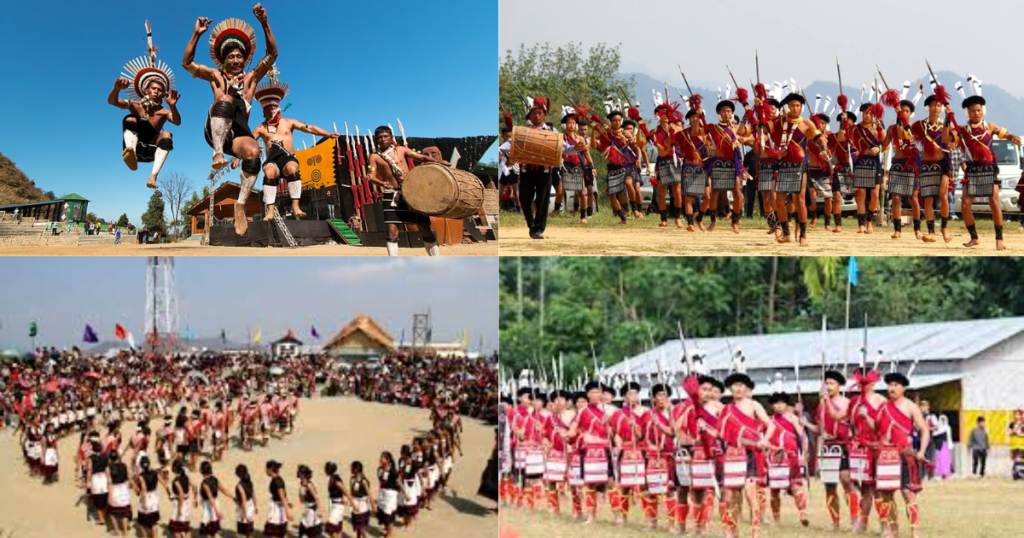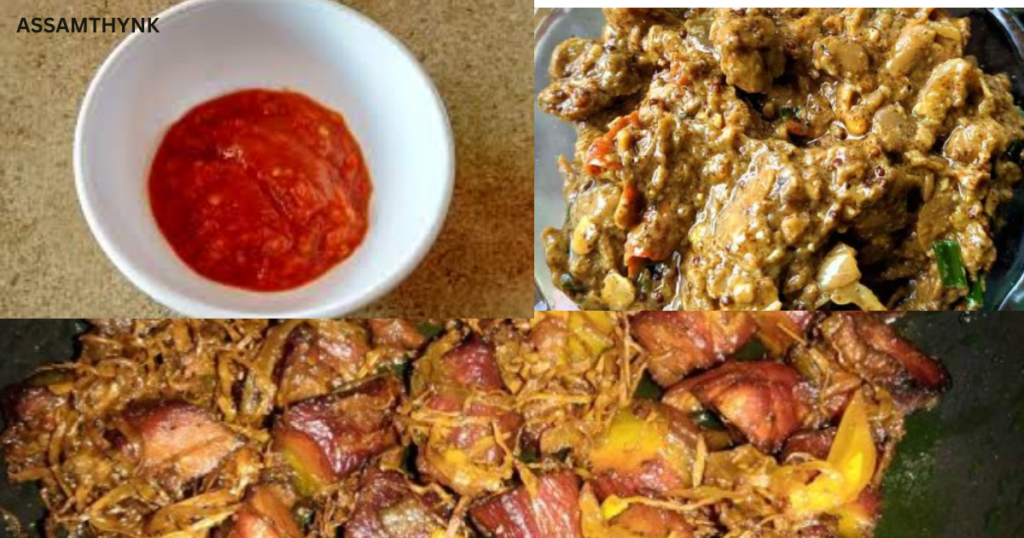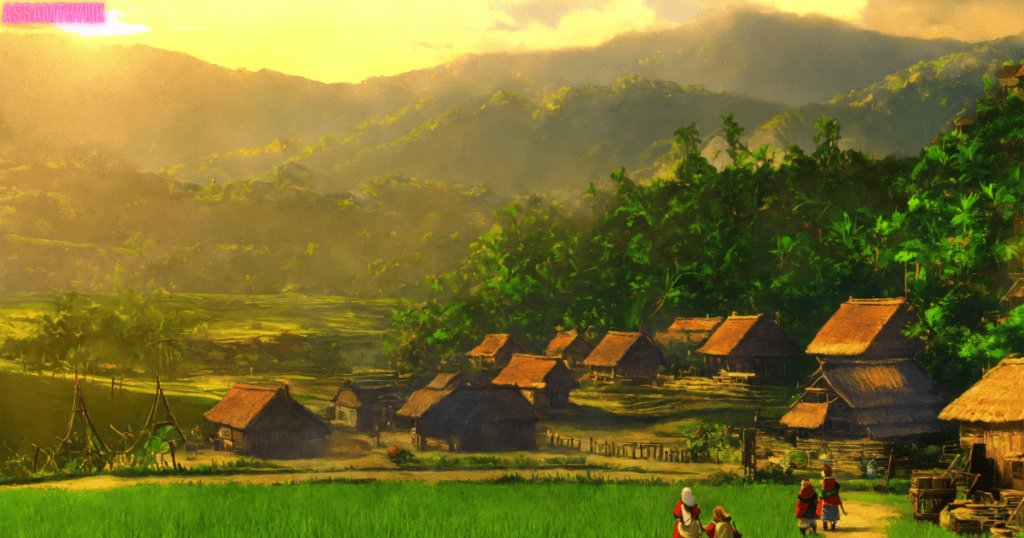Introduction
Nagaland, one of the most picturesque states in India, is a land of undulating hills, lush valleys, and rich cultural heritage. Nestled in the northeast of India, it offers an incredible experience for those seeking unspoiled nature, vibrant traditions, and heartwarming hospitality. Known as the “Land of Festivals,” Nagaland celebrates life with unique festivals, traditional music, and dance forms, making it a must-visit destination.
From the mighty Dzüko Valley to the historic Kohima War Cemetery, Nagaland’s tourism potential is vast and unexplored. The rich tapestry of its history, culture, and festivals is interwoven with its stunning natural beauty, making it a destination like no other.
History of Nagaland
Nagaland’s history is as intriguing as its landscapes. This state is home to the Naga tribes, each with its own unique traditions, dialects, and folklore. Before becoming a part of India in 1963, Nagaland’s story was marked by tribal self-governance and colonial influences.
During British rule, the Naga Hills came under their administration in the late 19th century. The Naga people played a significant role during World War II, especially in the Battle of Kohima, often called the “Stalingrad of the East.” After India gained independence, Nagaland’s political journey culminated in its statehood on December 1, 1963.
Culture and Traditions of Nagaland
Nagaland is a melting pot of diverse cultures, with 16 officially recognized tribes. Each tribe has its own language, attire, and customs, creating a vibrant cultural mosaic. Traditional Naga attire, adorned with beads and feathers, symbolizes the tribal identity and community spirit.
Music and dance are integral to Naga culture. Folk dances like the war dance and harvest dance reflect the state’s deep connection to nature and life. Nagaland’s oral tradition is rich, with folklore passed down through generations, offering insights into the tribes’ ancient wisdom and beliefs.
Festivals of Nagaland
Nagaland’s festivals are a reflection of its vibrant culture and tribal heritage. Most festivals are linked to agriculture, the mainstay of the Naga economy.
1. Hornbill Festival:
The Hornbill Festival, celebrated annually from December 1 to 10 in Nagaland, showcases the vibrant culture, traditions, and heritage of the state’s 16 indigenous tribes. Held in Kisama Heritage Village, the festival features traditional dances, folk music, arts, crafts, and Naga cuisine. Named after the revered Hornbill bird, it promotes unity and tourism. The festival also includes rock concerts, fashion shows, and indigenous games, making it a grand cultural spectacle.
2. Sekrenyi Festival:
Sekrenyi is a significant festival of the Angami Naga tribe in Nagaland, celebrated in February to mark purification and the arrival of spring. The 10-day festival involves ritual baths, feasting, folk songs, dances, and community bonding. It symbolizes renewal, cleansing of sins, and strengthening of kinship. Traditional games and warrior dances make Sekrenyi a vibrant cultural celebration, reflecting the rich heritage of the Angami people.
3. Moatsu Festival:
The Moatsu Festival is an important festival of the Ao Naga tribe in Nagaland, celebrated in May after the sowing season. It marks a time of rest, joy, and community bonding following intense agricultural work. The festival features folk dances, songs, feasting, and traditional rituals to invoke blessings for a prosperous harvest. It reflects the rich cultural heritage of the Ao people and their deep connection to nature.
4. Tuluni Festival:
Tuluni is a major festival of the Sumi Naga tribe in Nagaland, celebrated in July to mark the season of bountiful harvest. It is a time of gratitude, feasting, and social bonding, where families share rice beer (Tuluni) and special delicacies. The festival also includes folk dances, songs, and traditional games. Tuluni signifies prosperity, unity, and joy, strengthening ties within the community and honoring agricultural traditions.
Rivers of Nagaland
Nagaland is blessed with several rivers that enrich its landscapes and support its ecosystems. Some major rivers include:
- Doyang River: The Doyang River is the longest river in Nagaland, originating from Wokha district and flowing into the Brahmaputra River in Assam. It is vital for irrigation, fishing, and hydroelectric power, with the Doyang Hydro Project being a key energy source. The river also attracts thousands of Amur falcons during migration, making it a significant ecological site. Its scenic beauty and importance make it a cherished natural treasure of Nagaland.
- Dhansiri River: The Dhansiri River is the largest river in Nagaland, originating from the Laisang Peak in the Peren district. A major tributary of the Brahmaputra River, it flows through Nagaland and Assam, enriching the fertile plains. The river supports biodiversity, agriculture, and local livelihoods. Its banks are home to rich flora and fauna, including migratory birds. The Dhansiri plays a crucial role in Nagaland’s ecosystem and economy.
- Tizu River: The Tizu River is one of Nagaland’s major rivers, flowing through Zünheboto, Phek, and Kiphire districts before entering Myanmar. It serves as a vital water source for local communities and supports agriculture, fishing, and transportation. The river is also a hotspot for eco-tourism, offering activities like kayaking and rafting. With its scenic beauty and ecological importance, the Tizu River plays a crucial role in Nagaland’s natural landscape.
Tourism in Nagaland
Nagaland offers a plethora of attractions for nature lovers, history buffs, and cultural enthusiasts.
1. Kohima:
Kohima, the capital of Nagaland, is known for its rich history, vibrant culture, and scenic beauty. It is home to the famous Kohima War Cemetery, Kisama Heritage Village (host of the Hornbill Festival), and the stunning Dzukou Valley. Visitors can explore tribal traditions, local cuisine, and handicrafts while enjoying panoramic views. Kohima offers a perfect blend of history, adventure, and indigenous Naga heritage, making it a must-visit destination.
2. Dzüko Valley:
Dzüko Valley, on the Nagaland-Manipur border, is a breathtaking destination known for its rolling green hills, seasonal flowers, and pristine streams. Located at 2,452 meters, it is famous for the rare Dzüko Lily. A paradise for trekkers and nature lovers, the valley offers stunning landscapes, especially during monsoon. With its serene beauty and rich biodiversity, Dzüko Valley is a must-visit spot in Nagaland tourism.
3. Mokokchung:
Mokokchung, home to the Ao Naga tribe, is a popular tourist destination in Nagaland, known for its rich culture, scenic landscapes, and vibrant festivals. Attractions include Longkhum Village, Ungma Village, and the District Museum. The Moatsu Festival in May showcases traditional dances, songs, and feasts. With its picturesque hills, warm hospitality, and historical significance, Mokokchung is a must-visit for culture and nature enthusiasts.
4. Mon:
Mon, a district in Nagaland, is famous for its Konyak Naga tribe, known for their rich warrior heritage and unique facial tattoos. Tourists visit Longwa village, where the Indo-Myanmar border passes through the chief’s house. The district is known for its traditional festivals, tribal crafts, and scenic hills. Mon offers a deep cultural experience, showcasing ancient customs, wood carvings, and the legacy of Naga headhunters.
5. Khonoma Village:
Khonoma Village, located 20 km from Kohima, is a model of eco-tourism and sustainable living in Nagaland. Home to the Angami Naga tribe, it is famous for its rich history, lush terraced fields, and community-led conservation efforts. The village played a key role in resisting British rule. Visitors can explore nature trails, traditional Naga architecture, and local handicrafts, making Khonoma a must-visit destination for culture and nature lovers.
6. Phek:
Phek, a picturesque district in Nagaland, is known for its pristine landscapes, rich culture, and eco-tourism. It is home to Shilloi Lake, a scenic natural lake surrounded by hills, and Dzüdü Lake, a high-altitude attraction. Adventure lovers can explore Mount Saramati and the Japfu Peak trek. Phek also showcases traditional Chakhesang Naga culture, making it a perfect destination for nature and heritage enthusiasts.
7. Tuophema Village:
Tuophema Village, located 41 km from Kohima, is a heritage village showcasing the rich traditions of the Angami Naga tribe. It offers visitors a chance to experience traditional Naga lifestyle, cuisine, and folk performances. The village is known for its eco-tourism initiatives, scenic landscapes, and warm hospitality. Tourists can stay in Naga-style huts, explore local history, and participate in the Tuophema Tourist Festival, making it a unique cultural getaway.
Famous Temples in Nagaland
While Nagaland is predominantly Christian, it has a few Hindu temples and other sacred places that reflect its diverse spiritual landscape.
Shiva Temple, Dimapur:
A historic temple dedicated to Lord Shiva, attracting pilgrims from across the region.
Triple Falls, Seithekima:
While not a temple, it is a revered site for its natural serenity and spiritual significance.
Borders and Geography of Nagaland
Nagaland shares its borders with Assam to the west, Arunachal Pradesh to the north, and Manipur to the south. To the east, it borders Myanmar, making it a crucial state for India’s Act East Policy.
Its strategic location and rich biodiversity make Nagaland a unique blend of natural beauty and cultural diversity. The state’s geography, characterized by hills, valleys, and rivers, offers breathtaking vistas and adventure opportunities.
Nagaland Dishes
Nagaland dishes are a vibrant reflection of its tribal heritage, offering a delightful culinary experience. Known for their simplicity, bold flavors, and use of fresh, locally sourced ingredients, these dishes highlight the essence of Naga cuisine.
1. Smoked Pork with Bamboo Shoot
One of the most iconic dishes, this savory delight combines tender smoked pork with tangy bamboo shoot. It is often cooked with fermented soybeans or axone for added depth of flavor.
2. Axone (Fermented Soybean Dishes)
Axone is a signature ingredient in Naga cuisine, used in a variety of dishes. It has a pungent aroma and is often cooked with vegetables or meats to create flavorful meals.
3. Naga King Chili Chutney
Made from the world’s spiciest chili, the Bhut Jolokia (Ghost Pepper), this fiery chutney is a must-try for spice lovers. It adds a punch of heat to any meal.
FAQ
1.Why is Nagaland famous?
Nagaland is famous for its vibrant tribal culture, colorful festivals like the Hornbill Festival, breathtaking landscapes, unique Naga cuisine, historical landmarks, eco-tourism villages, and warm hospitality, making it a captivating destination.
2.How to plan a trip to Nagaland?
To plan a trip to Nagaland, choose the right season (October to May), obtain an Inner Line Permit (ILP), explore key destinations like Kohima, Dzüko Valley, and Mon, book accommodations early, and immerse in local festivals.
3.What food is Nagaland famous for?
Nagaland is famous for its flavorful dishes like smoked pork with bamboo shoot, axone (fermented soybean), naga chilli, anishi (fermented yam), and zutho (rice beer), reflecting the state’s rich tribal culinary heritage.
4. Is Nagaland a part of Assam?
No, Nagaland is a separate state in India. It was carved out of Assam and became a state in 1963.
5. What is the main festival of Nagaland?
The main festival of Nagaland is the Hornbill Festival, celebrated annually in December. Known as the “Festival of Festivals,” it showcases the vibrant culture, traditions, and arts of Nagaland’s diverse tribes.
6. Who is the CM of Nagaland?
The Chief Minister of Nagaland is Neiphiu Rio. He has served multiple terms and is known for his leadership and focus on development and promoting Nagaland’s unique cultural identity.
7. Which language is spoken in Nagaland?
Nagaland is linguistically diverse, with English as the official language. Tribes speak over 16 dialects, including Ao, Angami, Sumi, and Konyak, making it a rich tapestry of linguistic heritage.
Conclusion
Nagaland is a treasure trove of natural beauty, rich history, and vibrant culture. From its serene valleys and majestic rivers to its lively festivals and warm people, it offers an unparalleled travel experience. Whether you’re exploring its bustling towns or tranquil villages, Nagaland leaves a lasting impression on every visitor.









I was recommended this blog by my cousin. I’m not sure whether this post
is written by him as no one else know such detailed about my difficulty.
You are wonderful! Thanks!